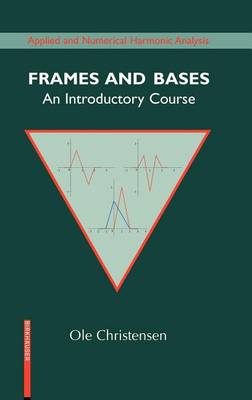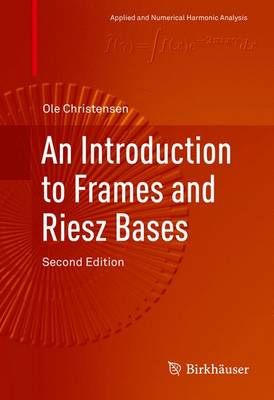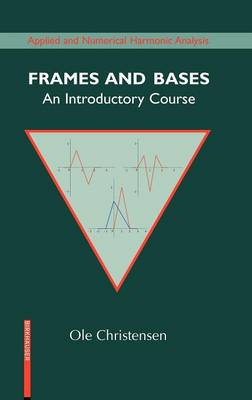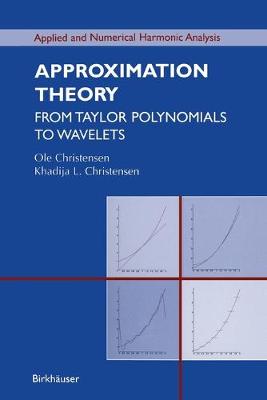Applied and Numerical Harmonic Analysis
5 total works
This revised and expanded monograph presents the general theory for frames and Riesz bases in Hilbert spaces as well as its concrete realizations within Gabor analysis, wavelet analysis, and generalized shift-invariant systems. Compared with the first edition, more emphasis is put on explicit constructions with attractive properties. Based on the exiting development of frame theory over the last decade, this second edition now includes new sections on the rapidly growing fields of LCA groups, generalized shift-invariant systems, duality theory for as well Gabor frames as wavelet frames, and open problems in the field.
Key features include:
*Elementary introduction to frame theory in finite-dimensional spaces
* Basic results presented in an accessible way for both pure and applied mathematicians
* Extensive exercises make the work suitable as a textbook for use in graduate courses
* Full proofs includ
* Explicit constructions of frames and dual pairs of frames, with applications and connections to time-frequency analysis, wavelets, and generalized shift-invariant systems
* Discussion of frames on LCA groups and the concrete realizations in terms of Gabor systems on the elementary groups; connections to sampling theory
* Selected research topics presented with recommendations for more advanced topics and further readin
g* Open problems to stimulate further research
An Introduction to Frames and Riesz Bases will be of interest to graduate students and researchers working in pure and applied mathematics, mathematical physics, and engineering. Professionals working in digital signal processing who wish to understand the theory behind many modern signal processing tools may also find this book a useful self-study reference.
Review of the first edition:
"Ole Christensen's An Introduction to Frames and Riesz Bases is a first-rate introduction to the field ... . The book provides an excellent exposition of these topics. The material is broad enough to pique the interest of many readers, the included exercises supply some interesting challenges, and the coverage provides enough background for those new to the subject to begin conducting original research."
- Eric S. Weber, American Mathematical Monthly, Vol. 112, February, 2005
This graduate-level textbook is a detailed exposition of key mathematical tools in analysis aimed at students, researchers, and practitioners across science and engineering. Every topic covered has been specifically chosen because it plays a key role outside the field of pure mathematics. Although the treatment of each topic is mathematical in nature, and concrete applications are not delineated, the principles and tools presented are fundamental to exploring the computational aspects of physics and engineering.
Readers are expected to have a solid understanding of linear algebra, in Rn and in general vector spaces. Familiarity with the basic concepts of calculus and real analysis, including Riemann integrals and infinite series of real or complex numbers, is also required.
Based on a streamlined presentation of the author's successful work, An Introduction to Frames and Riesz Bases, this book develops frame theory as part of a dialogue between mathematicians and engineers. Newly added sections on applications will help mathematically oriented readers to see where frames are used in practice and engineers to discover the mathematical background for applications in their field. The book presents basic results in an accessible way and includes extensive exercises.
Approximation Theory
by Ole Christensen and Khadija Laghrida Christensen
This concisely written book gives an elementary introduction to a classical area of mathematics - approximation theory - in a way that naturally leads to the modern field of wavelets. The exposition, driven by ideas rather than technical details and proofs, demonstrates the dynamic nature of mathematics and the influence of classical disciplines on many areas of modern mathematics and applications. Featuring classical, illustrative examples and constructions, exercises, and a discussion of the role of wavelets to areas such as digital signal processing and data compression, the book is one of the few to describe wavelets in words rather than mathematical symbols.




